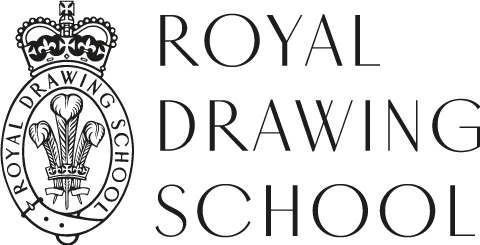Exploring the Italian Renaissance: The Drawing Year Students at The King’s Gallery
The Drawing Year 2025 students recently had the unique opportunity to explore Drawing the Italian Renaissance at The King’s Gallery, London. Led by Julian Bell, the visit provided an immersive encounter with Renaissance drawing, combining insights from Artists in Residence and Drawing Year alumni Joshua Pell and Jesse Ajilore with hands-on study.

The Drawing Year 2025 students recently visited Drawing the Italian Renaissance at The King’s Gallery, London. Led by artist and writer Julian Bell, the visit was an opportunity for students to immerse themselves in the intricate world of Renaissance drawing. The day began with an insightful discussion between students and Artists in Residence, Joshua Pell and Jesse Ajilore, Drawing Year alumni who have been working on site weekly for the past three months. Following the conversation, students took up their sketchbooks and worked directly from works on display, engaging with art history through the act of drawing.
For the students, this was a chance to experience the past in a hands-on way, using the drawing process to uncover the techniques and ideas embedded in these timeless works. The Royal Collection Trust generously allowed students to explore the exhibition outside of regular hours, to create a uniquely focused and immersive experience.
Pictured below is an engaging Q&A session with Joshua Pell and Jesse Ajilore, where artists candidly shared their reflections on working with Renaissance drawings.

Q: Are there artworks you find yourself returning to repeatedly?
Joshua Pell:
Absolutely. I’ve noticed that my focus tends to shift over time. Once I’ve deeply explored one drawing for a few weeks, I naturally begin searching for a new challenge. That said, there are two portraits at the far end of the room – drawings of heads, especially The Head of St Thomas by Polidoro – that I find myself revisiting, even if just for a couple of minutes. Sometimes, a single small detail can spark a whole new line of inquiry. Even if you’re trying to make a faithful copy, the process inevitably leads to personal decisions that give the work a unique twist.
Q: When working from historical drawings, is your goal to recreate them exactly, or do you look to explore new interpretations?
Joshua Pell:
That’s a great question. While the intent might be to follow the original decisions of the artist, the act of drawing always introduces personal insights. Even when attempting an honest copy, the outcome is never identical to the original. It’s about engaging with the artist’s choices and allowing that process to challenge and inform your own creative practice.
Q: Do you ever get a sense of the personality or “voice” behind historical works?
Jesse Ajilore:
Honestly, I don’t focus too much on that aspect. Even after spending considerable time with the works, I often find that I can’t recall every title or specific detail. What sticks with me is the overall mood and the ideas the drawing brings. Sometimes, the energy or feeling of a drawing prompts entirely new creative directions, even if I can’t pin down a specific personality behind it.
Q: How do you plan to integrate the work from this residency into your future practice?
Joshua Pell:
I’m still figuring that out. Right now, my drawings feel like diary entries from this immersive period. Eventually, I might collage them, piecing together different elements to create something entirely new. It’s a method of transforming the residency work into a part of my personal artistic narrative without simply transplanting it into my studio.
Jesse Ajilore:
For me, the ideas and imagery captured during the residency definitely influence my current studio work. While some pieces might remain as standalone experiments, I often find myself recombining visual elements to produce something more modern. It’s less about preserving the original and more about using them as a source of inspiration.

By engaging directly with Renaissance works, students not only refine their technical skills but also open up new pathways for creative expression, seamlessly bridging historical practices with modern interpretations.
Drawing the Italian Renaissance is open until 9th March at The King’s Gallery, Buckingham Palace, Thursday to Monday from 10.00 - 17.30. Visitors to the exhibition are encouraged to try their hand at drawing, with paper and pencils available in the gallery.



